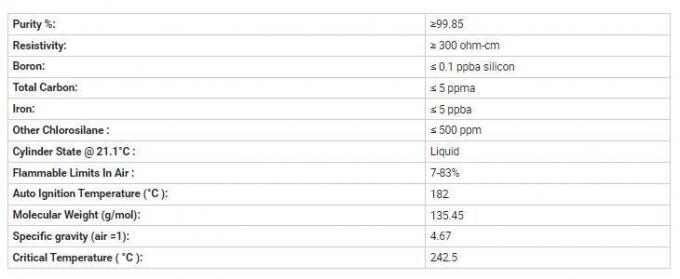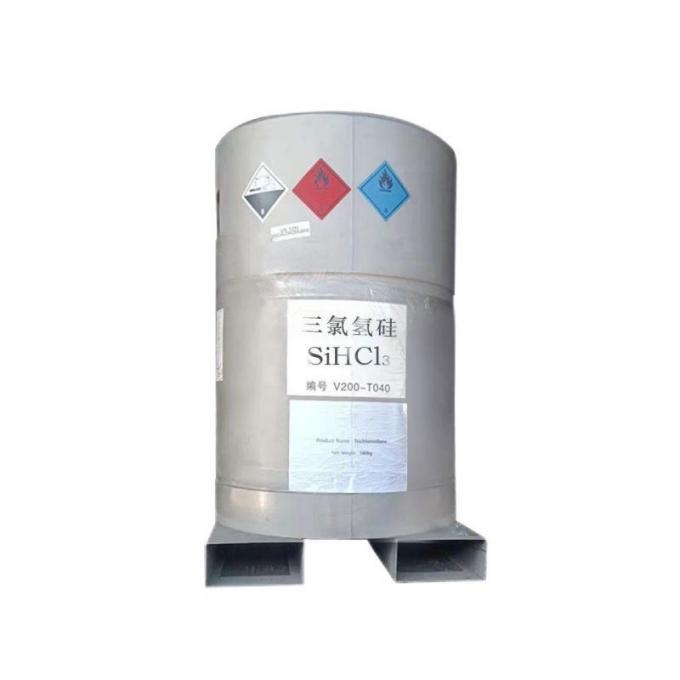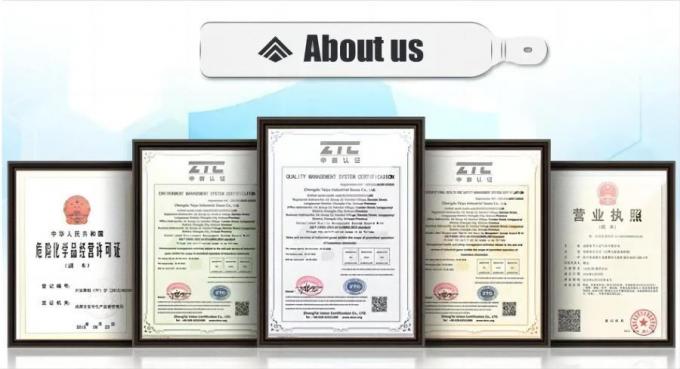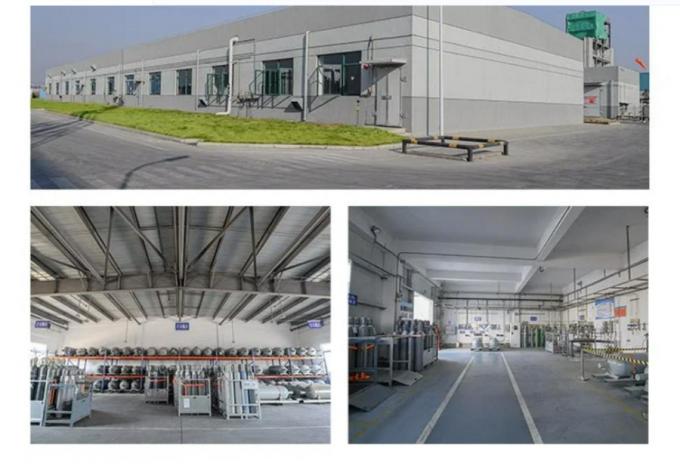


| MOQ: | 1kg |
| Price: | US $500/kg |
| Standard Packaging: | Cylinder/Tank |
| Delivery Period: | 30 days |
| Payment Method: | L/C, T/T |
| Supply Capacity: | 200 Tons/Year |
Trichlorosilane (SiHCl3) is a chemical compound composed of one silicon atom bonded to three chlorine atoms and one hydrogen atom. It is a colorless, volatile liquid that has a pungent odor. Here are some key points about trichlorosilane:
Chemical Composition: Trichlorosilane consists of one silicon (Si) atom bonded to three chlorine (Cl) atoms and one hydrogen (H) atom. Its chemical formula is SiHCl3.
Properties: Trichlorosilane is a volatile liquid with a boiling point of -30.8 degrees Celsius (-23.4 degrees Fahrenheit) and a melting point of -120.1 degrees Celsius (-184.2 degrees Fahrenheit). It has a characteristic odor similar to that of hydrochloric acid.
Production: Trichlorosilane is primarily produced through the reaction of metallurgical-grade silicon (usually derived from quartz or silicon dioxide) with hydrogen chloride (HCl) gas:
Si + 3HCl → SiHCl3 + H2
This reaction typically occurs at high temperatures in the presence of a catalyst, such as copper, to facilitate the reaction.
Uses: Trichlorosilane has various industrial applications:
Silicon Production: It is a key precursor in the production of polycrystalline silicon, which is widely used in the manufacturing of solar cells, semiconductors, and electronics.
Chemical Synthesis: Trichlorosilane is utilized as a starting material or intermediate in the synthesis of various silicon-based compounds, including silanes, silicones, and high-purity silicon.
Semiconductor Industry: It is used as a source material for the chemical vapor deposition (CVD) process, where trichlorosilane is decomposed to deposit thin layers of silicon on semiconductor wafers.
Optical Fiber Manufacturing: Trichlorosilane is used in the production of high-purity silica glass, which is essential for optical fibers and other optical components.
Safety Considerations: Trichlorosilane is flammable and may react violently with water or moisture, releasing hydrogen chloride gas. It is corrosive to metals and can cause skin and eye irritation. Proper safety precautions, such as using appropriate protective equipment and handling procedures, should be followed when working with trichlorosilane.
It's important to handle trichlorosilane with care and adhere to safety measures to mitigate potential risks associated with its reactivity and corrosiveness.
Basic Info.
| Model No: | SiHCl3 | Quality | Electron Grade |
| Transport Package | Y-Cylinder, T-Drum, Tt, Tanker | Specification | 20L, 40L, 280L and customizable |
| Trademark | CMC | Origin | Suzhou, China |
| HS Code | 2812190091 | Production Capacity | 500ton/Month |
Specification:
 Detailed Photos
Detailed Photos





| MOQ: | 1kg |
| Price: | US $500/kg |
| Standard Packaging: | Cylinder/Tank |
| Delivery Period: | 30 days |
| Payment Method: | L/C, T/T |
| Supply Capacity: | 200 Tons/Year |
Trichlorosilane (SiHCl3) is a chemical compound composed of one silicon atom bonded to three chlorine atoms and one hydrogen atom. It is a colorless, volatile liquid that has a pungent odor. Here are some key points about trichlorosilane:
Chemical Composition: Trichlorosilane consists of one silicon (Si) atom bonded to three chlorine (Cl) atoms and one hydrogen (H) atom. Its chemical formula is SiHCl3.
Properties: Trichlorosilane is a volatile liquid with a boiling point of -30.8 degrees Celsius (-23.4 degrees Fahrenheit) and a melting point of -120.1 degrees Celsius (-184.2 degrees Fahrenheit). It has a characteristic odor similar to that of hydrochloric acid.
Production: Trichlorosilane is primarily produced through the reaction of metallurgical-grade silicon (usually derived from quartz or silicon dioxide) with hydrogen chloride (HCl) gas:
Si + 3HCl → SiHCl3 + H2
This reaction typically occurs at high temperatures in the presence of a catalyst, such as copper, to facilitate the reaction.
Uses: Trichlorosilane has various industrial applications:
Silicon Production: It is a key precursor in the production of polycrystalline silicon, which is widely used in the manufacturing of solar cells, semiconductors, and electronics.
Chemical Synthesis: Trichlorosilane is utilized as a starting material or intermediate in the synthesis of various silicon-based compounds, including silanes, silicones, and high-purity silicon.
Semiconductor Industry: It is used as a source material for the chemical vapor deposition (CVD) process, where trichlorosilane is decomposed to deposit thin layers of silicon on semiconductor wafers.
Optical Fiber Manufacturing: Trichlorosilane is used in the production of high-purity silica glass, which is essential for optical fibers and other optical components.
Safety Considerations: Trichlorosilane is flammable and may react violently with water or moisture, releasing hydrogen chloride gas. It is corrosive to metals and can cause skin and eye irritation. Proper safety precautions, such as using appropriate protective equipment and handling procedures, should be followed when working with trichlorosilane.
It's important to handle trichlorosilane with care and adhere to safety measures to mitigate potential risks associated with its reactivity and corrosiveness.
Basic Info.
| Model No: | SiHCl3 | Quality | Electron Grade |
| Transport Package | Y-Cylinder, T-Drum, Tt, Tanker | Specification | 20L, 40L, 280L and customizable |
| Trademark | CMC | Origin | Suzhou, China |
| HS Code | 2812190091 | Production Capacity | 500ton/Month |
Specification:
 Detailed Photos
Detailed Photos



